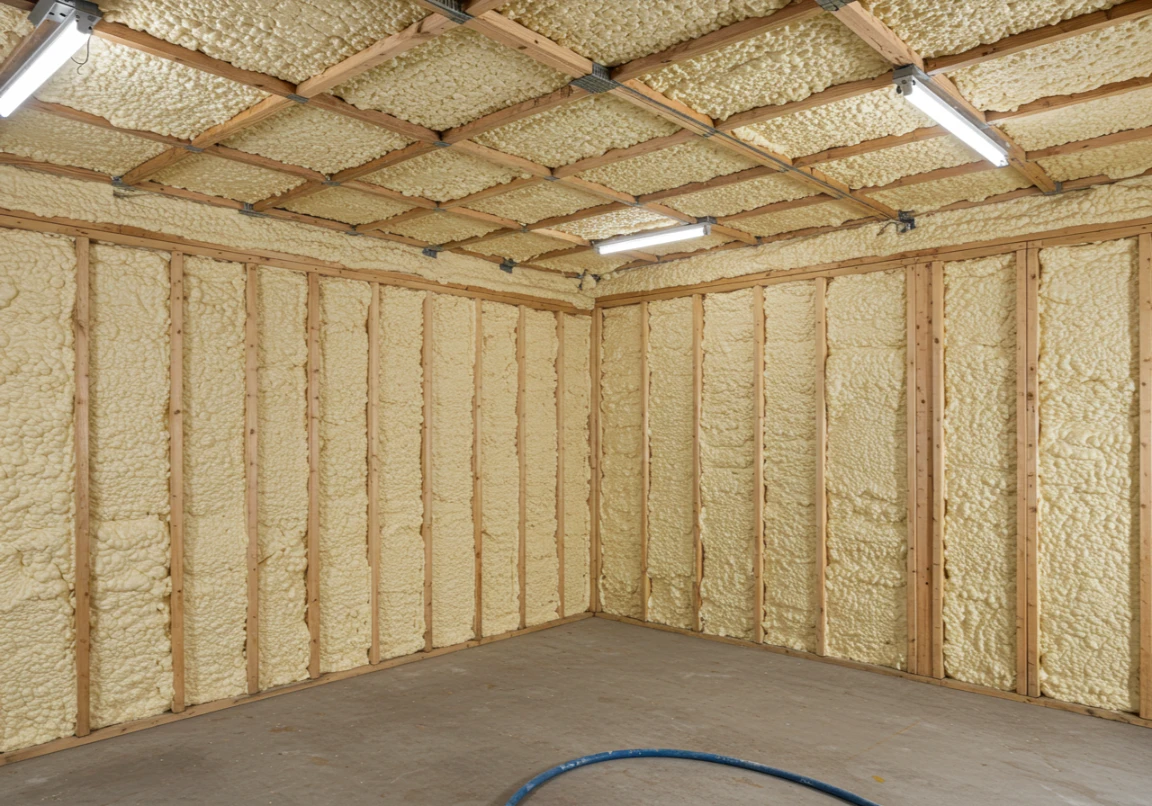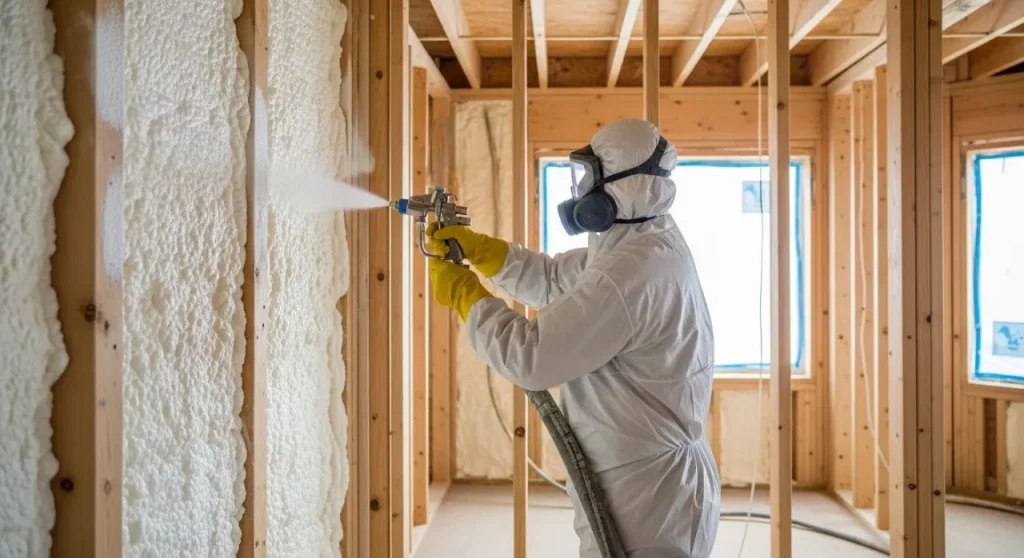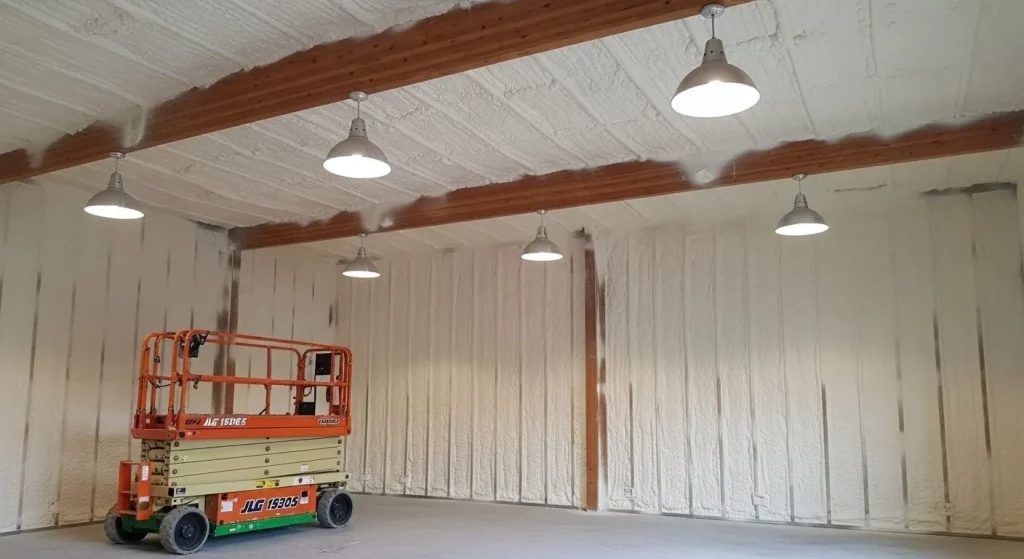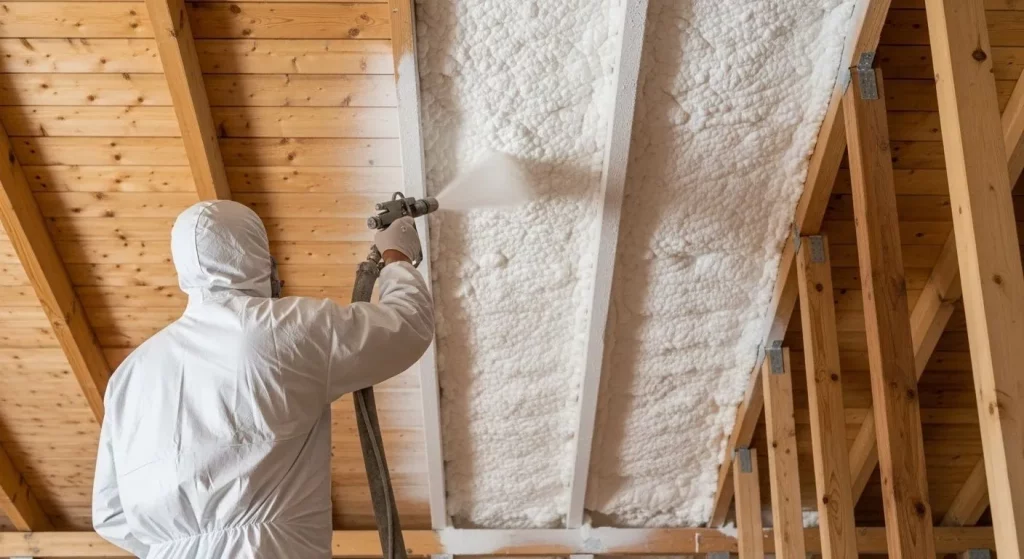Spray foam insulation offers families five distinct pathways to long-term financial savings. The most immediate benefit comes from drastically lower monthly energy bills due to its superior air-sealing properties. It also allows for the installation of smaller, less expensive HVAC systems, prevents costly moisture-related damage, increases home resale value, and eliminates the need for future replacement due to its exceptional durability. This article will break down each of these cost-saving advantages, providing the details needed to understand the full financial picture of this insulation choice. The information here is based on extensive field experience and industry knowledge in residential and commercial insulation applications.
Lower Monthly Energy Bills
The primary way spray foam insulation saves money is by creating a nearly impenetrable air barrier. A significant portion of a home’s heating and cooling costs is directly related to air leakage. The U.S. Department of Energy explains that gaps and cracks in a home’s envelope can account for a large percentage of energy loss. Traditional insulation types, like fiberglass batts, do not stop airflow. Spray foam expands to fill every crack and crevice, effectively stopping this air exchange.
By preventing conditioned air from escaping and outside air from entering, the home’s heating and cooling systems don’t have to work as hard or run as often. This directly translates to lower utility bills month after month. The savings are often most noticeable during peak summer and winter months when temperature extremes place the highest demand on HVAC equipment.
Smaller, More Efficient HVAC Systems
Because spray foam creates such an airtight and well-insulated space, the heating and cooling load of the home is greatly reduced. This often means a smaller, less expensive HVAC unit can be installed. HVAC contractors perform a “Manual J” calculation to determine the appropriate size of the system needed to heat and cool a home effectively. An airtight building envelope is a major factor in this calculation.
Opting for a smaller “right-sized” unit saves money in two ways:
- Lower Upfront Cost: Smaller HVAC units are less expensive to purchase and install.
- Reduced Operating Costs: A correctly sized unit runs more efficiently than an oversized one. Oversized systems frequently cycle on and off, which uses more energy and causes excessive wear on components. A right-sized system runs for longer, steadier cycles, maintaining a more consistent temperature with less energy.
Prevention of Costly Moisture Damage
Certain types of spray foam insulation, specifically closed-cell foam, act as a vapor barrier. This property is incredibly valuable for preventing moisture from entering the home’s structure. According to the U.S. Environmental Protection Agency, controlling moisture is the key to controlling mold. Unchecked moisture can lead to mold growth, wood rot, and deterioration of building materials.
The cost to remediate a serious mold problem or repair structural rot can be substantial, often running into thousands of dollars. By creating a moisture-impermeable barrier, closed-cell spray foam helps avoid these catastrophic repair bills. It’s a proactive investment that protects the structural integrity of the home and prevents future expenses related to water damage.
Bonus Tip: In humid climates or moisture-prone areas like crawl spaces and basements, using closed-cell spray foam is especially effective. It not only insulates but also protects the subfloor and foundation from dampness that can cause long-term issues.
Increased Home Longevity and Resale Value
A home insulated with spray foam is often more attractive to potential buyers. The promise of lower energy bills is a strong selling point. A report from the National Association of Realtors regularly finds that heating and cooling costs are a top concern for homebuyers. An energy-efficient home can command a higher price and spend less time on the market.
Beyond the immediate appeal of energy savings, spray foam also adds structural rigidity to the building. This is particularly true for closed-cell foam applied to walls and roof decks. This added strength can make the home more resilient to high winds and other environmental stressors, contributing to its overall longevity and value.
Insulation Lifespan and Replacement Costs
Another financial factor is the material’s durability. Unlike other insulation types that can sag, settle, or degrade over time, spray foam is a permanent solution. It adheres to the structure and doesn’t lose its shape or insulating properties.
| Insulation Type | Typical Lifespan | Common Issues |
|---|---|---|
| Spray Foam | 80+ years (Lifetime of home) | None when properly installed |
| Fiberglass | 15-30 years | Sagging, settling, moisture absorption |
| Cellulose | 20-30 years | Settling, compaction, fire retardant degradation |
Choosing spray foam means you insulate once and are done. With other materials, you may face the cost of removal and re-installation down the road, an expense spray foam homeowners avoid entirely. While these long-term benefits are compelling, it is also important to consider the factors involved in making a decision.
Things to Consider Before Making a Decision
Before committing to spray foam, it’s important to evaluate a few factors to ensure it’s the right choice for your home and budget.
- Open-Cell vs. Closed-Cell: These are the two main types of spray foam. Open-cell is less dense, provides a superior sound barrier, and is typically less expensive. Closed-cell is dense, acts as a vapor barrier, adds structural strength, and has a higher R-value per inch. The right choice depends on the application area (walls, attic, crawlspace) and your specific goals.
- Professional Installation is Key: The performance of spray foam is entirely dependent on the quality of the installation. Improper application can lead to gaps, poor adhesion, or off-gassing. Always work with a certified and experienced contractor.
- Ventilation Needs: Creating an airtight home means you must have a plan for mechanical ventilation. A properly ventilated home is essential for healthy indoor air quality. This might involve an Energy Recovery Ventilator (ERV) or a Heat Recovery Ventilator (HRV).
- Upfront Cost: Spray foam has a higher initial installation cost compared to traditional insulation. The financial benefits are realized over time through energy savings and avoided repairs. It’s best viewed as a long-term investment rather than a short-term expense.
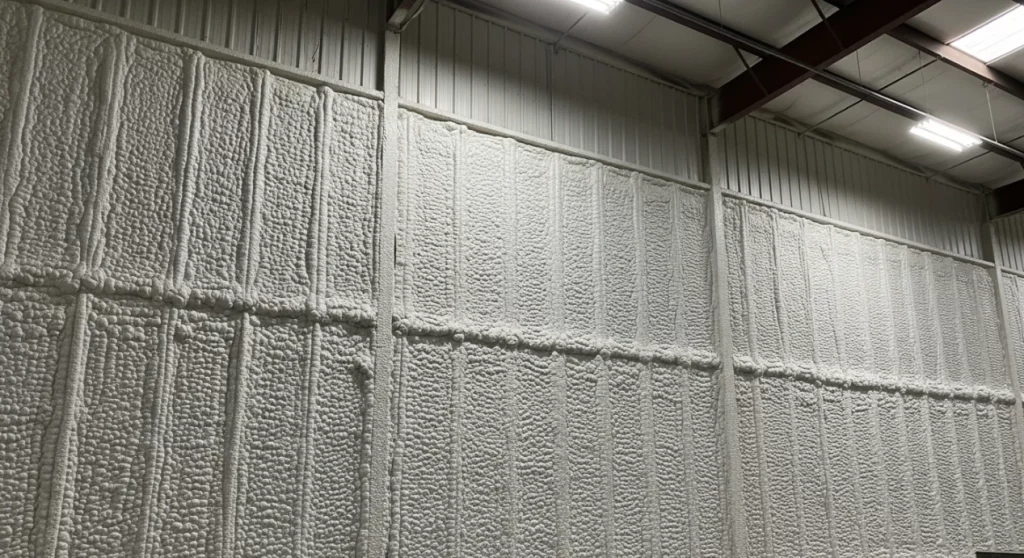
Final Thoughts
While the initial cost of spray foam insulation is higher than some alternatives, its long-term financial benefits are clear and substantial. Through lower energy bills, reduced HVAC costs, prevention of expensive repairs, and increased home value, it represents a sound investment in a home’s efficiency and durability. Families looking to reduce their monthly expenses and improve their home’s comfort should consider how these savings accumulate over time. The key is to assess your specific situation and long-term financial goals to determine the best path forward.
Get a Professional Assessment
Understanding the unique needs of your home is the first step. For a detailed evaluation and to see if this insulation is the right fit for your property, contact the team at Raleigh Excel Spray Foam Insulation. You can reach an expert by calling (919) 301-9435 or by sending an email to [email protected]. Getting a clear picture of your home’s potential for energy savings can help you make an informed financial decision that pays off for years to come.
Sources
- U.S. Department of Energy – Provides official information on how air sealing impacts home energy consumption.
- U.S. Environmental Protection Agency – Offers guidance on moisture control as the primary method for preventing mold growth in homes.
- National Association of Realtors – Publishes research reports detailing the preferences and concerns of homebuyers, including energy costs.
Frequently Asked Questions About Spray Foam
How long does it take to see a return on investment?
The payback period varies depending on factors like climate, energy costs, the home’s condition before insulation, and the type of foam used. Many homeowners start seeing significant savings on their first utility bill, with a full return on the initial investment often occurring within 3 to 7 years.
Can it be installed in an existing home?
Yes, spray foam can be installed in existing homes, a process known as retrofitting. It can be applied in open cavities like attics, crawl spaces, and rim joists. For enclosed walls, a different application method called injection foam is often used.
What is the biggest financial mistake people make with insulation?
The biggest financial mistake is choosing an insulation material based solely on the upfront price without considering its long-term performance and energy savings. A cheaper material that allows for significant air leakage will cost far more over its lifetime in wasted energy than a high-performance system like spray foam.
How does spray foam affect home insurance?
In some cases, using spray foam can have a positive effect on home insurance premiums. Because closed-cell foam is water-resistant and can add structural strength, some insurers may view it as a feature that reduces the risk of certain types of claims, like those related to water damage or wind damage. It’s always a good idea to speak with your insurance provider.
Does spray foam require any maintenance?
No. Once installed correctly, spray foam is inert and requires no maintenance. It will not settle, shrink, or degrade, and it will last for the life of the building. This eliminates any future costs associated with insulation upkeep or replacement.
Can I install spray foam myself?
This is strongly discouraged. Spray foam insulation involves a chemical reaction that requires precise temperatures, pressures, and application techniques. Professional installers have specialized equipment and extensive safety training to ensure the job is done correctly and safely. DIY kits rarely produce the same quality of results and can create serious problems if mishandled.




